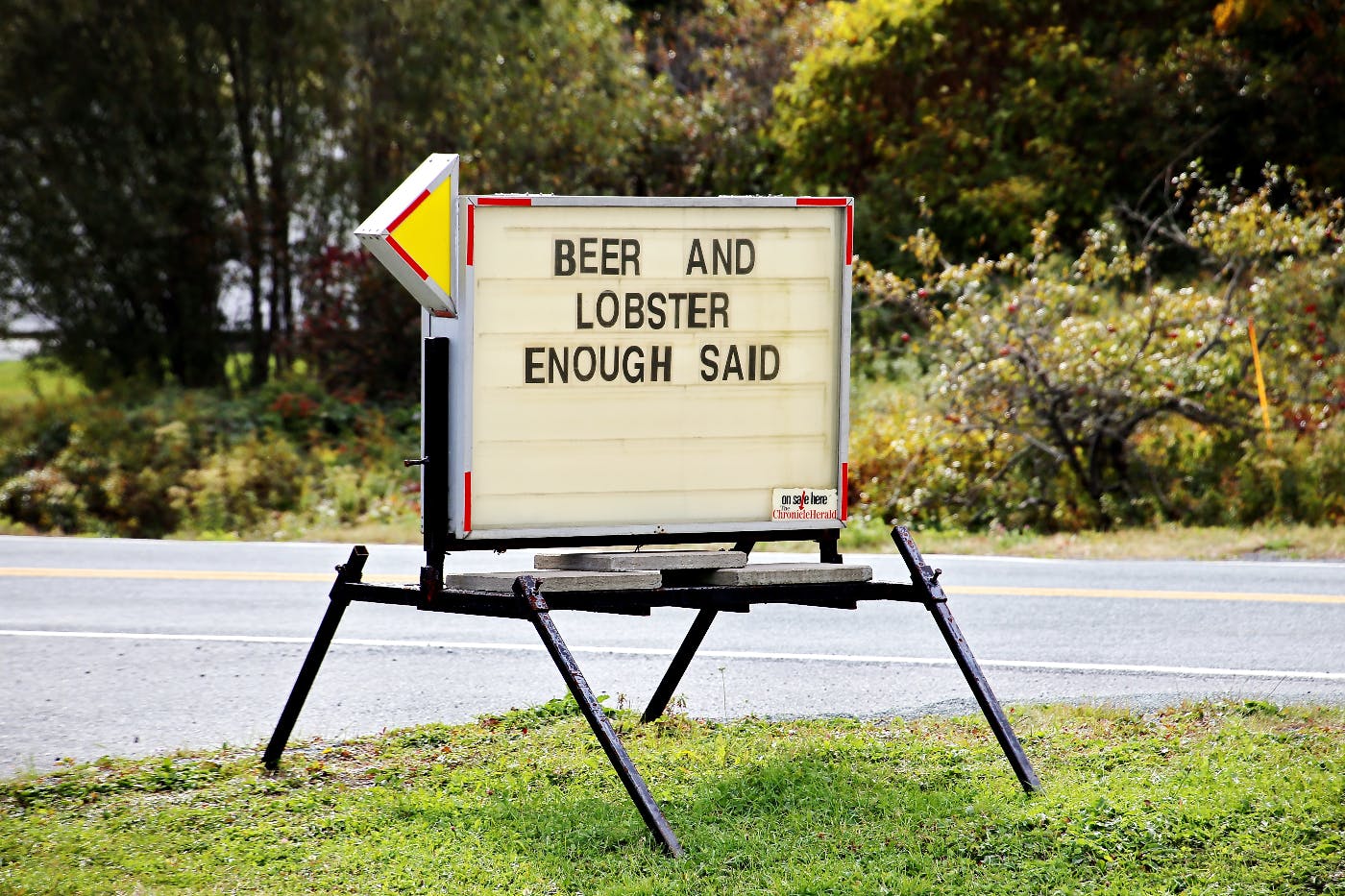
In the digital age, where content is king, the art of creative copywriting has become a paramount skill.
In the digital age, where content is king, the art of creative copywriting has become a paramount skill. Whether you're trying to sell a product, share a story, or convince an audience, crafting a compelling narrative can be the key to capturing attention and achieving your goals. Copywriting, a unique blend of art and science, serves as the cornerstone of effective communication in today's information-driven world.
The Power of Words
Words are immensely powerful. They can inspire, persuade, educate, and entertain. In the realm of copywriting, words become tools for constructing narratives that engage readers, viewers, and listeners. A compelling narrative doesn't just inform; it connects with its audience on an emotional level, leaving a lasting impact. The significance of a well-crafted narrative is evident in the success of brands, the popularity of books, and the influence of thought leaders.
The Anatomy of a Compelling Narrative
Before delving into the finer points of creative copywriting, let's explore the elements that constitute a compelling narrative. Whether you're writing an advertisement, an article, or a social media post, the following components are crucial for your success:
Clarity: A clear narrative is essential to ensure your audience understands your message. Avoid ambiguity, and choose words carefully to convey your message effectively.
Relevance: Your narrative should be relevant to your target audience. Understand their needs, desires, and pain points, and tailor your message accordingly.
Emotion: Emotions are the driving force behind human decision-making. Your narrative should evoke emotions, whether it's excitement, empathy, or curiosity, to make a lasting impression.
Engagement: An engaging narrative keeps your audience's attention. Use storytelling techniques, such as creating relatable characters or using anecdotes, to draw readers in.
Call to Action (CTA): Every narrative should have a purpose. If you want your audience to take action, provide a clear and compelling CTA that guides them on what to do next.
Crafting a compelling narrative is an art that evolves with practice and creativity. It's not about using flowery language or fancy words; rather, it's about understanding your audience and using words effectively to create a connection.
The Power of Storytelling
At the heart of compelling narratives lies the age-old art of storytelling. Storytelling is the vehicle through which you can transport your audience to a different world, make them experience your message, and elicit an emotional response. Great copywriters are masterful storytellers. They understand that a story is more than just a sequence of events; it's a means to communicate a message.
Think of your favorite brand, and you'll likely find that it has a captivating story. Apple tells a story of innovation and simplicity. Nike's narrative revolves around inspiration and overcoming challenges. These stories are not just marketing ploys; they are the essence of the brand, and they resonate with consumers. When you wear a pair of Nike shoes, you're not just buying footwear; you're embracing the "Just Do It" philosophy.
To craft compelling narratives, consider the following storytelling techniques:
Character Development: Introduce relatable characters that your audience can connect with. These characters can be real or fictional, but they should represent the values or qualities associated with your message.
Conflict and Resolution: A good story has conflict and resolution. Highlight your audience's challenges and provide a solution that may involve your product or service.
Visual Imagery: Use descriptive language to paint a vivid picture in the minds of your readers. Engage their senses and transport them to the world you're creating.
Tension and Release: Build suspense and curiosity to keep your audience engaged. Release this tension with a satisfying resolution or revelation.
A Hero's Journey: The hero's journey is a classic narrative structure that involves a hero facing challenges, undergoing transformation, and returning with newfound wisdom. This structure can be adapted to various forms of copywriting, creating a compelling narrative arc.
A great example of storytelling in copywriting can be seen in the "Share a Coke" campaign by Coca-Cola. By replacing its logo with popular names, the brand made its customers the heroes of their own stories, encouraging them to share a Coke with friends and loved ones. The result was not just a boost in sales but also a surge in brand engagement and emotional connection.

The Science of Persuasion
While creativity is at the heart of compelling narratives, there's also a science to persuasion. Copywriters leverage psychological principles to influence decision-making and drive action. Some key principles include:
Social Proof: People are more likely to follow the crowd. Use testimonials, reviews, and statistics to show that others have benefited from your product or service.
Scarcity: Creating a sense of urgency can motivate action. Limited-time offers or exclusive deals can make your audience act quickly.
Reciprocity: When you give something valuable, people are more likely to give back. Offer free resources or valuable content to build goodwill with your audience.
Authority: Establish yourself or your brand as an authority in your niche. Share your expertise and credentials to gain trust and credibility.
Consistency: Encourage small commitments that lead to larger actions. Once people commit to something, they're more likely to follow through.
Anchoring: Use a reference point to make your offer seem more attractive. For instance, show a higher-priced option to make the standard option appear more reasonable.
Combining these psychological triggers with a well-crafted narrative can make your copywriting incredibly persuasive. Take, for example, Amazon's product pages. They incorporate social proof through reviews, use scarcity with limited stock notices, and display authority through detailed product descriptions, creating a compelling narrative that encourages purchase.
The Role of Creativity
Creativity is the heart and soul of compelling copywriting. It's about finding fresh angles, unique perspectives, and innovative ways to communicate a message. Copywriters often need to think outside the box to capture their audience's attention in a crowded digital landscape.
Consider the Old Spice "The Man Your Man Could Smell Like" campaign. By featuring a charismatic character who seamlessly transitions through various scenes, the brand created a humorous, memorable narrative. It was creative and unexpected and completely transformed the perception of a traditional brand.
To infuse creativity into your copywriting, follow these strategies:
Brainstorming: Start with brainstorming sessions that encourage wild ideas without judgment. Sometimes, the most unconventional concepts lead to breakthroughs.
Metaphors and Analogies: Use metaphors and analogies to explain complex concepts in a relatable manner. This can make your copy more engaging and memorable.
Wordplay: Experiment with wordplay, puns, and clever language. A well-placed pun or a catchy phrase can leave a lasting impression.
Visual Storytelling: Don't limit your creativity to words alone. Use visuals, such as images, infographics, and videos, to enhance your narrative.
A/B Testing: Test different creative approaches to see what resonates best with your audience. Data-driven decisions can lead to creative breakthroughs.
A memorable example of wordplay and creativity in copywriting is the M&M's slogan, "Melts in Your Mouth, Not in Your Hands." This tagline combines the product's unique selling point (no mess) with a catchy rhyme, making it easy to remember and repeat.
The Digital Landscape
In today's digital age, the platforms for copywriting are vast and diverse. Every medium requires a unique approach to crafting compelling narratives, from social media to blogs, email marketing, to video scripts.
Social Media Copy: On platforms like Twitter and Instagram, you have limited space to convey your message. Be concise, use impactful language, and create curiosity to drive engagement.
Blogging: Blogs allow for more extensive storytelling. You can dive deep into your narrative, use visuals, and even incorporate multimedia elements like videos or infographics.
Email Marketing: Email marketing often involves a series of messages that tell a story or guide the reader through a narrative. Use compelling subject lines and engaging content to keep readers interested.
Video Scripts: Video is a highly engaging medium for storytelling. Write compelling scripts that take viewers on a journey, whether it's a product demo, a brand story, or a tutorial.
Landing Pages: Landing pages are designed to convert visitors into customers. Craft a narrative that addresses pain points, presents a solution, and leads to a clear CTA.
E-commerce Descriptions: Product descriptions should do more than just list features. Use storytelling to highlight the benefits and make the product relatable to the customer.
It's important to adapt your narrative to the platform and audience you're targeting. While creativity is essential, it should be paired with an understanding of the medium's constraints and strengths.

The Future of Creative Copywriting
The world of copywriting is constantly evolving. As technology advances, new mediums and tools emerge, providing both opportunities and challenges for copywriters. Here are some trends and considerations for the future of creative copywriting:
Voice Search: With the rise of voice-activated devices, copywriters will need to optimize their content for voice search, focusing on conversational and natural language.
AI Assistance: AI tools can assist copywriters in generating ideas, optimizing content, and even personalizing messages. Copywriters will need to work in harmony with AI to enhance their productivity.
Interactive Content: Interactive content, such as quizzes, polls, and interactive storytelling, can engage audiences in a more immersive way. Copywriters will need to adapt their skills to create such content.
Sustainability and Ethics: Ethical considerations and sustainability will play an increasingly significant role in copywriting. Brands that advocate for responsible practices will require narratives that reflect their values.
Multilingual Copywriting: As businesses expand globally, copywriters who can work in multiple languages will be in high demand.
Augmented and Virtual Reality: These technologies offer new storytelling opportunities. Copywriters can create narratives that take users on virtual journeys or provide augmented information in real-world settings.
Privacy and Data Regulations: As data protection regulations evolve, copywriters will need to be mindful of privacy concerns and ensure their messages comply with legal requirements.
The Future of Creative Copywriting is an exciting one where innovation and adaptation will be key. While the core principles of storytelling, persuasion, and creativity will remain constant, copywriters will continue to evolve their skills to meet the demands of an ever-changing digital landscape.
Summing Up
Creative copywriting is an art form that combines the power of words, the magic of storytelling, and the science of persuasion. Crafting compelling narratives is not just about selling a product or conveying information; it's about creating connections, evoking emotions, and leaving a lasting impact on the audience.
The future of creative copywriting promises to be dynamic and challenging, but it's also full of opportunities for those who can adapt and innovate. Whether you're a seasoned copywriter or someone just starting, remember that the art of crafting compelling narratives is a journey, and with each word you write, you have the power to shape the world's perceptions and decisions. So, wield your words wisely and unleash the full potential of creative copywriting in the digital age.
You Should Know
ThoughtLab is a dynamic and innovative full-service creative agency renowned for its exceptional branding prowess and relentless commitment to thinking outside the box. With a team of visionary creatives, strategists, Web3, and marketing experts, plus decades of superior website design, ThoughtLab consistently delivers groundbreaking solutions that redefine the boundaries of branding and design. They understand that breaking away from convention and embracing bold, unique ideas is vital in today's fast-paced and competitive landscape.
ThoughtLab's approach involves immersing themselves in their client's businesses, understanding their values and aspirations, and crafting tailor-made branding experiences that resonate deeply with the target audience. Their track record of success stands as a testament to their ability to push creative boundaries, captivate audiences, and ensure their client's brands stand out amidst the noise. With a focus on innovation and a passion for excellence, ThoughtLab continues to be at the forefront of revolutionizing the world of branding and marketing. Contact ThoughtLab today.

